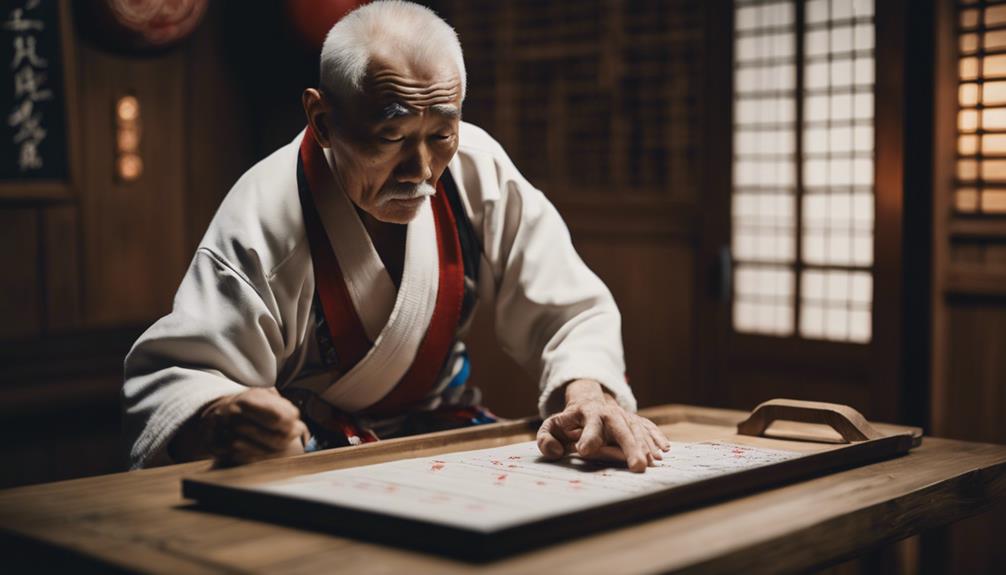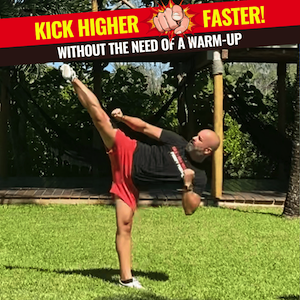As you continue to practice martial arts over 40, your flexibility will naturally decline, increasing your risk of injury and impacting your performance. To combat this, it is crucial to incorporate a well-designed stretching routine into your training. This should include a mix of dynamic and static stretches, targeting major muscle groups like your hips, hamstrings, and shoulders. Key stretches, such as the butterfly, lunge, and seated forward bend, can improve range of motion and reduce strain risks. A daily routine of 15-30 minutes, combining static and dynamic stretches, can help you maintain flexibility and prevent injuries – discover the specifics to create a routine tailored to your needs.
Key Points
- Adapt stretching routines to account for reduced flexibility and increased injury risk in martial artists over 40.
- Combine dynamic and static stretching for optimal mobility and injury prevention, aiming for 15-30 minutes, three times a week.
- Incorporate essential stretches like the butterfly, lunge, and seated forward bend to target key muscle groups.
- Use props like foam rollers, straps, and blocks to deepen stretches safely and enhance recovery.
- Regularly assess flexibility progress to tailor routines to individual needs and promote continued development.
Stretching Exercises for Martial Artists Over 40
As you progress in your martial arts journey beyond 40, it's vital to adapt your stretching routine to accommodate the physical changes that come with aging. Dynamic stretching is essential to prepare your body for movement, while static stretching post-workout enhances flexibility and facilitates recovery.
Incorporating key stretches can markedly improve your range of motion. Target hip flexibility with exercises like the Butterfly Stretch and Lunge Stretch, which reduce the risk of strains associated with aging.
Utilize foam rollers for self-myofascial release to alleviate muscle tightness and improve blood flow, aiding in recovery. Gentle stretches like the Cat-Cow and Cobra poses promote spinal flexibility and core strength, essential for maintaining balance and mobility in martial arts.
A daily flexibility routine of 15-30 minutes can lead to considerable improvements in flexibility, reducing the likelihood of injuries and enhancing overall performance.
Training Regimens for Reduced Flexibility
When reduced flexibility becomes a concern, older martial artists must adapt their training regimens to accommodate their changing needs.
To maintain mobility and range of motion, incorporating a combination of dynamic and static stretching techniques is essential. Aim for a minimum of 15-30 minutes of stretching, focusing on major muscle groups, at least three times per week. This consistent routine can enhance joint health, reduce stiffness, and improve flexibility.
In your stretching routine, prioritize dynamic stretching to prepare your muscles for movement, followed by static stretching to deepen the stretch.
Utilize props for stretching, such as straps or blocks, to safely aid in deepening stretches and promote greater flexibility while minimizing the risk of injury.
Regularly assess your flexibility progress through specific stretching tests to tailor your routine effectively to your unique needs and limitations.
Essential Stretches for Older Practitioners
To develop an effective stretching routine, focus on incorporating essential stretches that target key muscle groups. As an older martial artist, it's vital to prioritize gentle static stretching to improve flexibility without risking injury.
- Butterfly Stretch: Targets the hip adductors, gently increasing flexibility in the hip and groin area. Sit with your legs bent and feet together, letting your knees fall apart as you stretch.
- Lunge Stretch: Stretches the hip flexors, improving balance and reducing stiffness in the legs. Start in a lunge position, keeping your back knee almost touching the ground and your front thigh parallel to the floor.
- Seated Forward Bend: Enhances hamstring and back flexibility, improving range of motion. Sit on the floor with your legs straight out, leaning forward to stretch your hamstrings and lower back.
Regularly incorporating these essential stretches into your routine will help improve your flexibility, balance, and coordination.
Injury Prevention Through Flexibility
By incorporating flexibility training into your martial arts routine, you greatly reduce your risk of injury. Regular stretching can markedly lower your risk of common martial arts injuries, such as sprains and strains, by improving muscle elasticity and joint range of motion.
| Injury Type | Reduced Risk | Prevention Method |
|---|---|---|
| Sprains | 30% | Regular flexibility program |
| Strains | 30% | Regular flexibility program |
| Overuse Injuries | Lowered Likelihood | Targeted stretching of hip flexors and hamstrings |
Flexibility training enhances neuromuscular coordination, which is essential for older martial artists to maintain balance and prevent falls during training and sparring. A daily stretching routine that includes both static and dynamic stretches can enhance recovery and prevent muscle soreness. Incorporating flexibility training into your martial arts routine can also promote longevity in martial arts practice for older individuals. By making flexibility a priority, you can guarantee that you can continue to participate in martial arts training safely and effectively. By combining flexibility with martial arts training, you can optimize your overall performance and well-being.
Customizing Your Stretching Routine

Now that you've established a solid foundation for incorporating flexibility training into your martial arts routine, it's time to fine-tune your approach. Customizing your stretching routine is essential to target specific areas of tightness or limitation and enhance mobility.
Focus on major muscle groups such as the hips, hamstrings, and shoulders, and incorporate a mix of dynamic stretches for warm-up and static stretches for cooldown.
To take your stretching routine to the next level, consider the following:
- Incorporate props: Utilize props like yoga blocks or straps during stretches to provide support and deepen the stretch without compromising safety or form.
- Gradually increase duration and intensity: Gradually increase the duration and intensity of stretches, aiming to hold each static stretch for at least 15-30 seconds.
- Assess progress regularly: Regularly assess your progress by tracking improvements in range of motion and comfort levels during stretching to adjust your routine as needed for continued development.
In Summary
You've established a foundation for maintaining flexibility as an older martial artist. By incorporating essential stretches into your routine, you'll reduce the risk of injury and improve overall performance. Regularly assess your flexibility and adjust your regimen accordingly. Prioritize injury prevention by focusing on problem areas and gradually increasing range of motion. A well-structured stretching routine will help you continue practicing martial arts safely and effectively.



